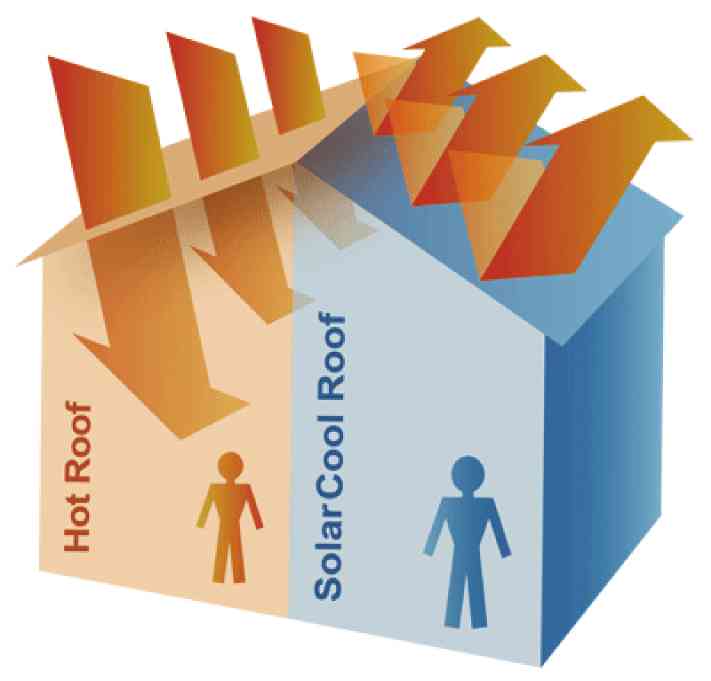Developers cite sustainable housing among solutions to climate change

A “COOL ROOF” is one that could reflect the sun’s energy away from a house or building, keeping it cool and lessening the need to often run energy hungry air-con units or electric fans.
As long as a house—or the whole community, for that matter—is designed in such a way that it minimizes the negative human impacts on its natural surroundings, the processes that prevail in nature, materials and resources, that a house or community may be regarded as sustainable.
Subdivision and Housing and Developers Association (SHDA) national president Armenia Ballesteros said: “With all the knowledge and resources available to us today there really is no excuse for a house builder or community developer not to be environmentally conscientious. Careful thought and consideration must be placed on every aspect of the project’s design, from the roof to the foundation to everything in between like electrical work, plumbing and even the affordability of the materials that will be used. Whether it’s a subdivision or condo building that needs to be built, it is important to consider the project’s environmental footprint so as not to disrupt the existing ecosystem.”
During last month’s 24th SHDA National Developers Convention, architect Emelito Punsalan of the United Architects of the Philippines explained that there are six aspects to consider: energy efficiency, water efficiency, material sustainability, solid waste management, site sustainability, and indoor environmental quality.
Punzalan, who also represents the Philippine Chapter of the American Society of Heating, Refrigerating, and Air-Conditioning Engineers (Ashrae), explained that for houses and buildings here in the country, the roof is first real line of defense against excessive heat buildup inside homes and buildings.
“Having a ‘cool roof’ is perhaps one of the significant things a home builder could aspire for as this could already reduce electricity bills by decreasing air-conditioning needs and at the same time, improving indoor comfort of the occupants,” he said.
Cool roof
A cool roof is one that has been designed to reflect more sunlight and absorb less heat than a standard roof. This is crucial considering that a standard or dark-painted roofs can reach temperatures of 65°C or more during hot days. Meanwhile, a cool roof under the same conditions could stay more than 10°C cooler.
Cool roofs can still be made of standard GI roofs covered by a highly reflective type of paint or highly reflective tiles or shingles. This type of roofs should also have appropriate insulation sheet directly underneath to prevent heat from penetrating the inside of the house.
Another issue that homebuilders should also consider is the efficiency of the appliances that will be used inside. Punzalan explained there are plenty of options available at every price point. “Look for energy efficiency ratio of the appliance unit, which allow consumers to compare the efficiency and cost of operation of the different models. Moreover when building your home, look for products that are toxic-free, sustainable, recycled and with low levels of volatile organic compounds,” he suggested.
Ballesteros said that as house builders grapple with the demands placed on them to develop more sustainable housing, they will increasingly look to their suppliers and other partners to help them meet this challenge. “Whether they are a cement provider, a renewable energy supplier, a paint and coatings company, there are great opportunities to play a key role within this sustainability drive.”
Inaction not acceptable
And considering that scientific consensus now exists that greenhouse gas accumulations due to human activities are contributing to global warming with potentially catastrophic consequences, Secretary Mary Ann Lucille Sering of the Climate Change Commission explained during the SHDA developers convention that inaction is unacceptable as global warming consequences are now felt in various forms of disasters—heat waves, droughts, floods, typhoons and wildfires—which disrupt food and water supplies, damage infrastructure and profoundly affect individual health and safety, communities and nature all around the world.
In reaction, Ballesteros said the country’s house-building sector needs to immediately respond to climate change, both to cope with its ongoing effects and to reduce carbon emissions.
“Becoming more sustainable as an industry will mean changing and adapting our lifestyles,” she said, adding that “climate change presents architects and subdivision planners with significant opportunities to create or remodel outdoor spaces and buildings that are resilient in the face of future climates. Adaptation will enhance the liveability of, and quality of life in, communities in the future. The first to seize the opportunities to develop new services and products that respond to changing customer preferences can indeed, gain an ‘early-mover’ competitive advantage.”














